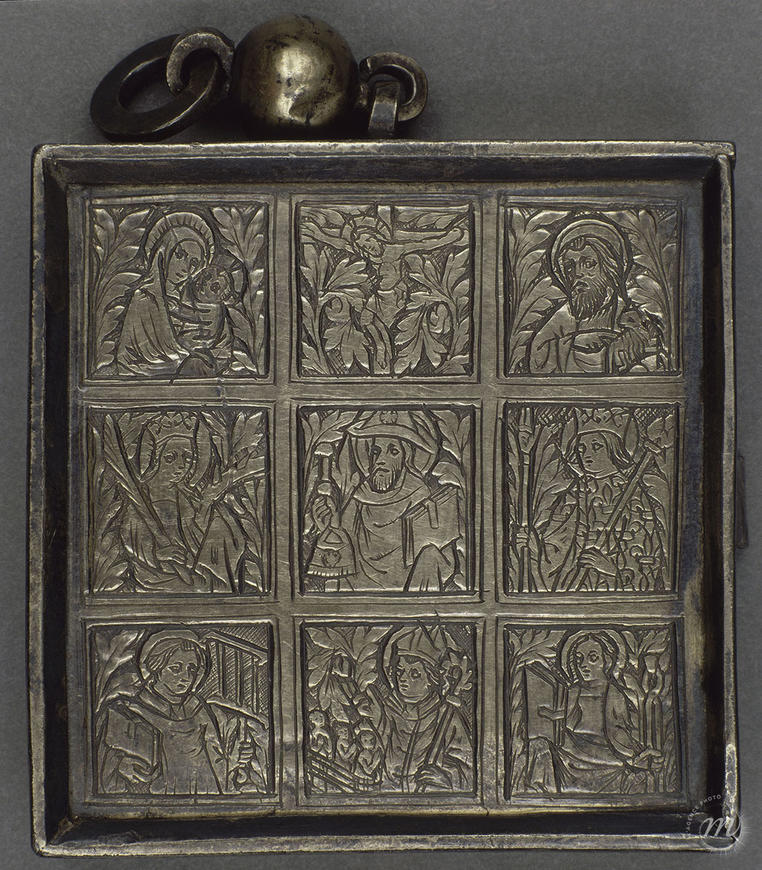The work was designed as a small box with a sliding front. It provides access to nine compartments, each containing a relic. A relic is a piece of the body of a holy person or object related to their life.
In the 14th and 15th centuries, Christians sought a closer relationship with God and the saints. This new devotion led to the creation of specific objects, such as books of hours and portable reliquaries, which were used to collect relics.
The lid is decorated with images of the figures corresponding to the relic. They can be recognised by their characteristics. For example, Saint Catherine is carrying a fragment of a wheel, because this is the object on which she was tortured. Saint John the Baptist carries a lamb because it was he who designated Jesus Christ "the Lamb of God"...
Inside the object, the relics, except for the one corresponding to the Virgin, are still preserved. They’re accompanied by an authentic: this is a small piece of parchment that guarantees that they’re genuine. It’s a sort of certificate of authenticity!
The work also illustrates the central role Paris played around 1400, as the political, economic and cultural capital of the Kingdom of France. The presence of the court there allowed many artists and artisans to show off their talent. In this way, the reliquary's creator, the goldsmith Jehan Nicolas, carried out commissions for Princess Marie of France and her brother Louis of Guyenne.
Detail : On the reverse, an inscription gives the precise circumstances for the order of the reliquary: “These holy relics were given by Madame Marie de France to Jehan Nicolas, her goldsmith, on the day of the ascension of our lord, one thousand CCCC and XIIII [1414]”.
Inv. A91

The work was designed as a small box with a sliding front. It provides access to nine compartments, each containing a relic. A relic is a piece of the body of a holy person or object related to their life.
In the 14th and 15th centuries, Christians sought a closer relationship with God and the saints. This new devotion led to the creation of specific objects, such as books of hours and portable reliquaries, which were used to collect relics.
The lid is decorated with images of the figures corresponding to the relic. They can be recognised by their characteristics. For example, Saint Catherine is carrying a fragment of a wheel, because this is the object on which she was tortured. Saint John the Baptist carries a lamb because it was he who designated Jesus Christ "the Lamb of God"...
Inside the object, the relics, except for the one corresponding to the Virgin, are still preserved. They’re accompanied by an authentic: this is a small piece of parchment that guarantees that they’re genuine. It’s a sort of certificate of authenticity!
The work also illustrates the central role Paris played around 1400, as the political, economic and cultural capital of the Kingdom of France. The presence of the court there allowed many artists and artisans to show off their talent. In this way, the reliquary's creator, the goldsmith Jehan Nicolas, carried out commissions for Princess Marie of France and her brother Louis of Guyenne.
Detail : On the reverse, an inscription gives the precise circumstances for the order of the reliquary: “These holy relics were given by Madame Marie de France to Jehan Nicolas, her goldsmith, on the day of the ascension of our lord, one thousand CCCC and XIIII [1414]”.
Inv. A91